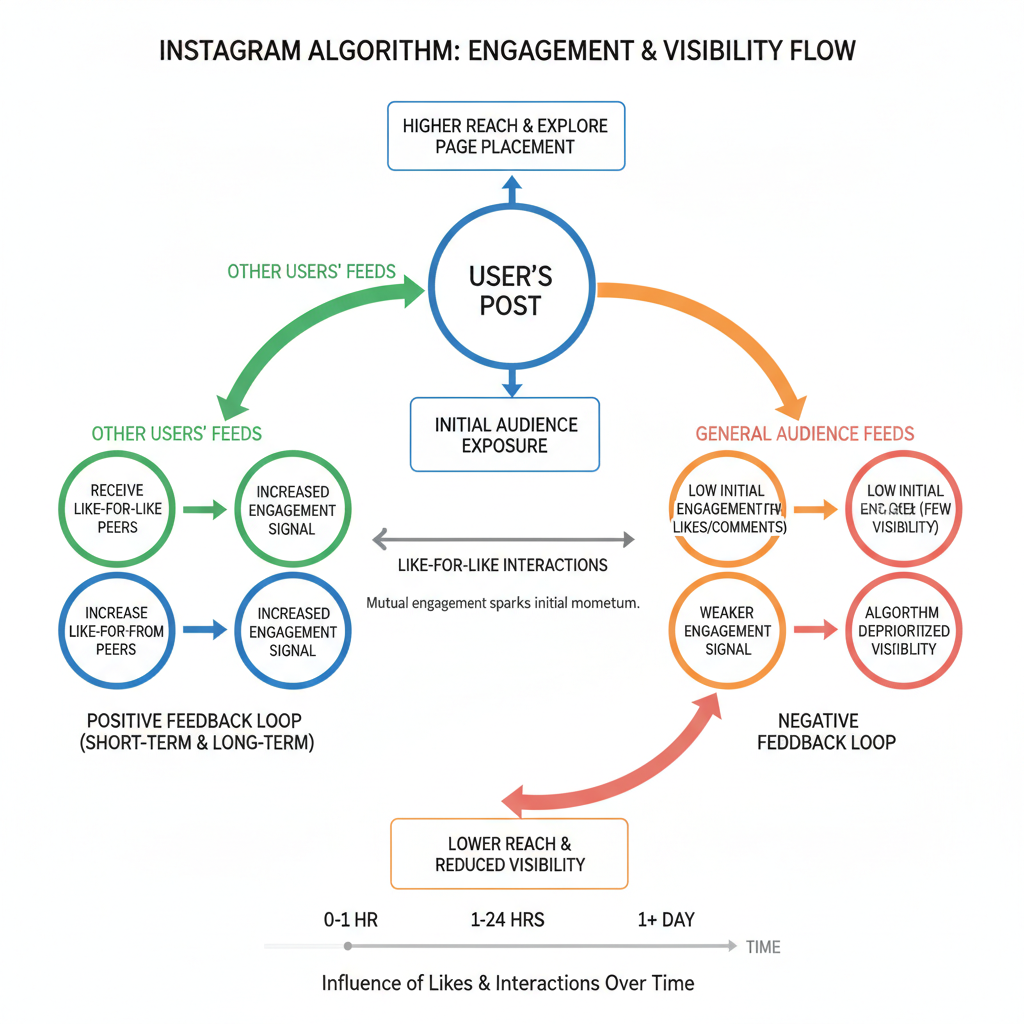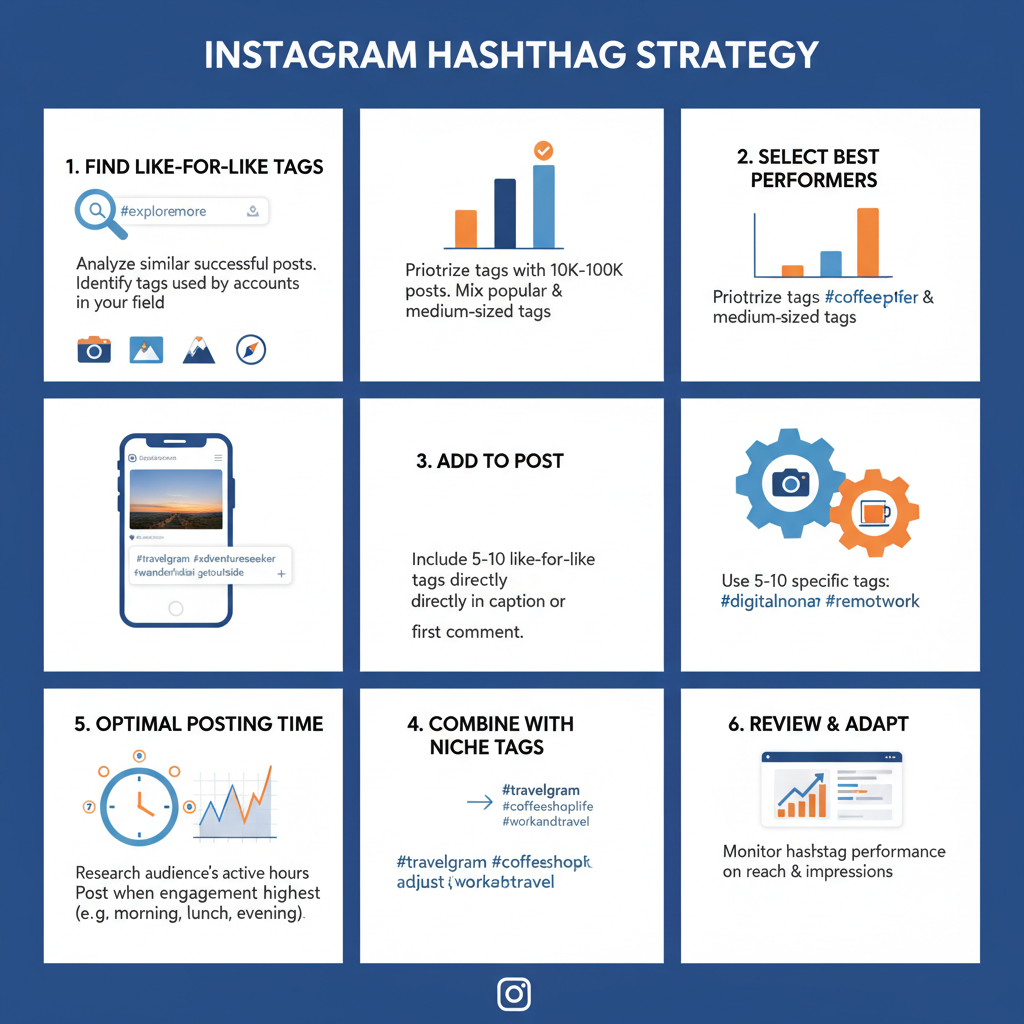Effective Strategies for Like for Like Tags on Instagram
Learn how to use like for like Instagram hashtags effectively, balancing engagement boosts with algorithm-friendly tactics for lasting growth.

Understanding "Like for Like" Tags in Instagram Culture
In Instagram marketing, like for like tags are a popular yet controversial tactic for driving mutual engagement. When users include hashtags such as `#like4like` or `#l4l`, they’re signaling a willingness to exchange likes — “if you like my post, I’ll like yours.” This method can temporarily boost engagement and visibility, but it has nuanced implications for how your content is ranked and discovered on the platform.

Before adopting these tags, it’s important to understand how they work, their pros and cons, and best practices to ensure they enhance rather than harm your long-term Instagram growth strategy.
---
Pros and Cons of Using Like for Like Hashtags
Like for like tags are a double-edged sword for growing your Instagram presence. Let’s break down both sides.
Advantages:
- Immediate Engagement Boost: Gain likes quickly, making your content appear more popular.
- Community Interaction: Connect and network with other growth-focused users.
- Hashtag Feed Visibility: Appear in feeds where users actively browse for engagement exchanges.
Drawbacks:
- Low-Quality Traffic: Engagement often comes from non-target audiences, reducing relevance.
- Short-Term Spikes: Like counts can drop off after initial exposure.
- Algorithm Risks: Potential reach reduction if patterns look spammy or unnatural.
---
Popular Like for Like Tags You Can Use
Some of the most recognizable and frequently searched Instagram hashtags for mutual engagement include:
| Hashtag | Meaning | Usage Frequency |
|---|---|---|
| #like4like | Like my post, I'll like yours | Very high |
| #l4l | Abbreviation for "like for like" | High |
| #likeforlikes | Mutual liking on multiple posts | Moderate |
| #likes4likes | Similar to like for like, plural | Moderate |
| #liking | General liking behavior, sometimes used for l4l | Lower |
---
How the Instagram Algorithm Responds to This Engagement
Instagram’s algorithm rewards content with authentic, sustained engagement. Likes from “like for like” users often lack meaningful interaction, which can lead the system to flag them as low-value engagement.

Possible outcomes:
- Reduced Explore Page Presence: Lower retention diminishes exploratory reach.
- Feed Ranking Drop: Prioritization goes to content with comments, shares, and saves.
- Shadowban Risk: Repetitive, exchange-based engagement may appear spam-like.
---
Strategies to Use Like for Like Tags Without Harming Reach
If you choose to integrate like for like tags into your strategy, the right approach can help you avoid penalties and maintain quality engagement.
Best Practices
- Blend Hashtags: Mix mutual-engagement tags with niche-specific hashtags.
- Interact Authentically: Engage with others’ posts beyond a simple like.
- Limit Tag Count: Stick to a maximum of 2–3 exchange tags per post.
- Focus on Content Quality: Strong visuals and captions can generate organic engagement.
---
Combining with Niche-Specific Hashtags
To attract a relevant audience, your hashtag set should marry engagement tags with niche-relevant tags.
Example for a travel blogger:
- Engagement: `#like4like`
- Niche: `#travelphotography #wanderlust #naturelovers`
A balanced hashtag bundle might include:
- 2–3 like for like tags
- 7–10 niche-related tags
- 2–3 seasonal or trending tags
---
Timing Your Posts for Maximum Engagement
Posting when your audience is most active can amplify the impact of your chosen tags.
Timing Tips
- Morning & Evening: 7–9 AM and 6–9 PM local time.
- Day Performance: Sundays and midweek often see higher engagement.
- Test & Analyze: Use Instagram Insights to find your own peak times.
---
Engaging with Users Post-Publishing
For sustainable results:
- Reply promptly to comments.
- Visit profiles of those who liked your post and interact meaningfully.
- Seek ways to build actual relationships rather than transactional likes.
---
Avoiding Spammy Behavior
Avoid patterns that might trigger Instagram’s spam filters:
- Avoid automated like/follow bots.
- Rotate hashtag sets regularly.
- Supplement likes with comments and shares to show real interest.
---
Analyzing Hashtag Performance
Instagram Insights can reveal how effective your hashtag combinations are at driving impressions.
Steps:
- Open the post and tap View Insights.
- Review Impressions from Hashtags.
- Compare performance between sets.
- Update your strategy based on these findings.
---
Alternatives to Like for Like Tags
Consider integrating other engagement tactics:
- Stories with Polls & Questions to spark interaction.
- Reels for higher organic reach.
- Creator Collaborations for mutual exposure.
- Giveaways to incentivize genuine participation.
---
Case Study: Food Blogger Growth Example
A food blogger posts homemade pasta using:
- Engagement: `#like4like #l4l`
- Niche: `#homemadepasta #foodblogger #italianfood #pastalover`
- Community: `#foodiecommunity #homecooking`
Results:
- Short-term like surge from engagement tags.
- Ongoing follower growth from niche and community audiences.
- Insights confirm niche hashtags outperform engagement tags for profile visits.
---
Summary and Next Steps
Using like for like tags on Instagram can give you an instant bump in metrics, but sustainable growth comes from combining them strategically with niche and community hashtags, posting at optimal times, and cultivating authentic relationships.
If you want to turn short bursts of attention into lasting influence, start tracking your performance today, refine your hashtag mix, and focus on delivering value that keeps your audience coming back.




